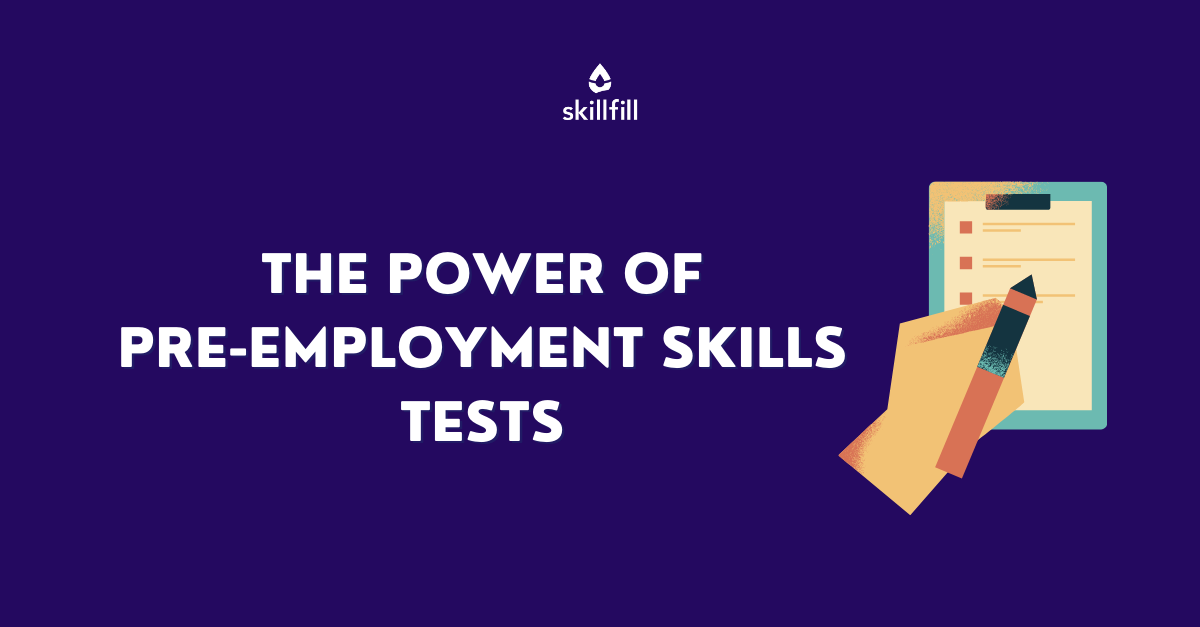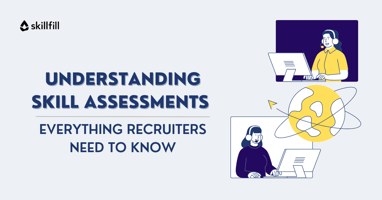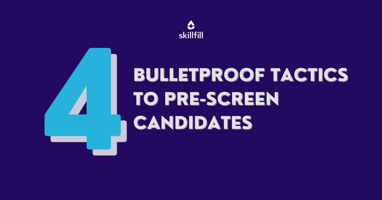Finding the right candidate for a job can be a challenging task for recruiters. A resume and cover...
The Power of Pre-Employment Skills Tests: what is and how to implement
In the talent aquisition space, effective strategies to recognize and select the best candidates are a must-have. Pre-employment skills testing has emerged as a game-changing instrument that empowers recruiters to make data-driven choices, streamline their recruitment processes, and ultimately identify the top talent for the position.
But what exactly are pre-employment skills tests and how do they revolutionize the landscape of recruitment?

Challenging traditional hiring processes
Traditionally, hiring processes have been plagued by inefficiencies and subjectivity. Relying solely on CVs to pre-screen candidates falls short in providing a comprehensive understanding of a candidate's true capabilities and skills. Additionally, the substantial time and effort invested in reviewing numerous applications and conducting interviews can lead to prolonged recruitment cycles and missed opportunities.
On the contrary, pre-employment skills testing introduces an objective and quantifiable approach to evaluating candidates. By making the best use of technology and skill assessments, employers can accurately understand a candidate's proficiency, knowledge, and abilities in relevant areas. These assessments are designed to measure both hard skills, such as technical competencies, and soft skills, including communication and problem-solving aptitudes.
The Advantages of Pre-Employment Skills Testing
-
Augmented Candidate Screening: Pre-employment skills testing enables employers to identify the most suitable candidates early in the recruitment process. By evaluating applicants based on their actual skills and capabilities, companies can filter out unqualified individuals, saving valuable time and resources.
-
Objective Evaluation: Unlike subjective interviews, skills tests provide an objective evaluation of candidates. This eradicates biases and ensures fair assessments based on merit, thereby increasing the likelihood of hiring the most qualified individuals.
-
Time and Cost Efficiency: By automating the assessment process, pre-employment skills testing significantly reduces the time and cost associated with traditional hiring methods. Recruiters can efficiently evaluate a large pool of candidates simultaneously, expediting the selection process and enabling companies to swiftly fill positions.
-
Enhanced Quality of Hires: Skills testing allows companies to make informed decisions by identifying candidates with the highest potential for success in specific roles. By focusing on skill proficiency and compatibility with job requirements, businesses can elevate the quality of their hires and decrease employee turnover rates.
Implementing Pre-Employment Skills Testing
Incorporating pre-employment skills testing into the hiring process is more efficient if carefully planned. Here are the key steps to successfully implement this practice:
-
Identify Key Skills: Start by identifying the essential competencies and skills required for the role. Collaborate with hiring managers, clients, and subject matter experts to create a comprehensive list of technical, behavioral, and cognitive skills that align with the job responsibilities.
-
Select Appropriate Assessment Tools: Once the competencies are defined, choose the most suitable assessment tools for evaluating them. There are various options, ranging from online skills tests and simulations to in-person practical assessments. skillfill.ai' skill assessments focus on accurately evaluating the candidates tech skills, freeing the recruiter's time to get to know the person behind the application.
-
Design Effective Test Scenarios: Craft relevant and scenario-based test scenarios that accurately reflect the challenges faced by candidates in the job role. These scenarios should simulate real-life situations, allowing candidates to demonstrate their abilities and problem-solving skills.
-
Establish Benchmark Criteria: By setting common criteria for evaluating the candidates' performance, you create a fair and efficient hiring process. These criteria should be aligned with the job requirements and aid in objectively measuring the proficiency levels of applicants.
-
Conduct Thorough Analysis: Once the assessments are complete, conduct a detailed analysis of candidate performance. Compare results against the established benchmarks, and leverage data-driven insights to make informed decisions during the selection process.
The Future of Hiring: Harnessing Skills Testing
In an ever-evolving job market, pre-employment skills testing represents a vital tool in staying ahead of the competition. By embracing this innovative approach, businesses can gain a competitive edge in attracting, assessing, and hiring top talent.
Pre-employment skills testing is a transformative practice that empowers businesses to make astute hiring decisions. By leveraging technology-driven assessments, companies can objectively evaluate candidates, enhance the quality of their hires, and reduce recruitment costs. With its ability to streamline the hiring process and identify the most qualified individuals, pre-employment skills testing is poised to revolutionize the way organizations approach talent acquisition.
Embrace this powerful tool and unlock the full potential of your hiring strategy.
ASSESS TECH TALENT BEYOND CVs
Start today your 14-day free-trial and identify the best tech talent to join your team.



